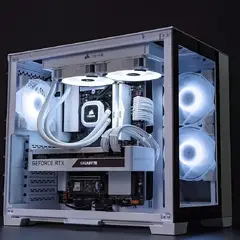DRAM cache
It makes absolutely no difference if it has dram cache or not.
It does 510 MB/s reads, 300 MB/s writes and has 80TB+ endurance, that's all you need to know.
Anyway, yeah, it has a DRAM chip ... that code belongs to Sandisk X300s series, and you can get datasheet here: http://downloads.sandisk.com/downloads/datasheet/x300s-datasheet.pdf
QuoteThe X300s uses a tiered caching structure to improve random write performance. Modern operating systems typically access the storage device using small 4KB access blocks. These small access blocks conflict with the physical block structure (>1MB) of newer flash memory technology. To bridge this difference, the X300s employs three storage layers: Volatile cache - DDR DRAM cache, nCache™ - A non-volatile flash write cache,
Mass storage – MLC NAND flash.
The nCache™ write cache is used to accumulate small writes at high speed then flush and consolidate them into the larger MLC section of the NAND flash memory array.
nCache is a portion of MLC kept in pseudo-SLC mode, for faster writes and higher endurance. As you fill the drive, this ncache portion is converter back to MLC and performance decreases. So make sure you always have at least 4-8 GB of free disk space on such SSD.
I have the 128 GB x400 version and it gets real slow when you're down to 2 GB or so free disk space, it doesn't like that.

















Create an account or sign in to comment
You need to be a member in order to leave a comment
Create an account
Sign up for a new account in our community. It's easy!
Register a new accountSign in
Already have an account? Sign in here.
Sign In Now